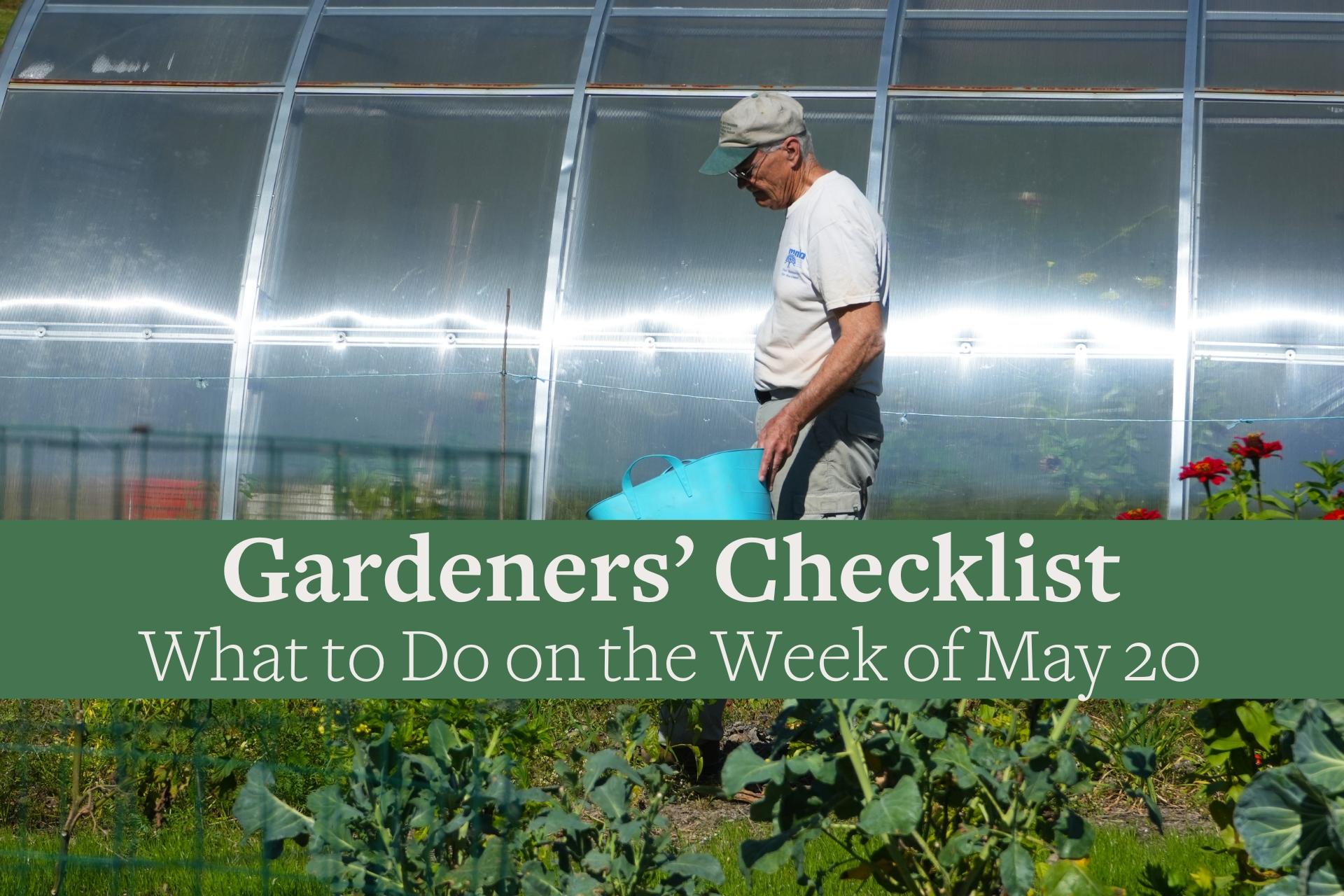You are here
Gardeners Checklist: Here Is What to Do on the Week of May 20
Gardeners Checklist: Here Is What to Do on the Week of May 20
By Ron Kujawski
* Use a sharp knife or scissors to cut off the outer leaves from leaf lettuce, arugula, and other leafy greens. If harvested in this manner, the plants’ crowns remain intact and productive for a long time.
* Keep an eye on early planted radishes. They grow fast and get punky, if not riddled by root maggots, when past maturity.
* Make additional sowings of carrot, radish and leaf lettuce. To get an even distribution of tiny seeds such as carrot, mix the seed with an equal amount of fine sand or corn meal.
* Sow seeds of warm season crops including beans, squash, melons, pumpkins, sweet corn, and cucumbers, soaking the seeds in tepid water for a few hours before planting. Hydrating seeds in this manner speeds their germination.
* Set out transplants of tomatoes, peppers and eggplant. For most of New England, it has been tradition to set out these seedlings on Memorial Day or soon thereafter to avoid exposure to frost. However, temperatures currently are well above normal, and it appears from the long-range forecast, they will remain so. As such, it seems worth the risk to begin transplanting now. When planting a tomato seedling, dig a shallow trench about 2 inches deep. Lay the seedling on its side in the trench and cover with soil, leaving the leafy upper portion of the stem exposed. Soon, roots will form along the stem below ground. This enhances the plant’s ability to take up water and nutrients. Also, with shallow planting, the roots will be near the surface where soil is warmest, something that tomato, a sub-tropical plant, likes.
* Take a stroll through the garden in the late evening. That’s the time when many floral scents are at their peak. Part of the reason is that the air is cool and calm and the chemicals responsible for scent are less likely to be volatilized. Another reason is that some of the most fragrant flowers are moth pollinated. These flowers emit their scent at night to attract moths at a time when they are most active, i.e. after sunset.
* Freshen existing mulch around trees and shrubs by fluffing it with a garden fork or rake. Do not add any additional mulch if the existing mulch is two or more inches deep. Total depth of mulch should NEVER exceed three inches. Mulch depth greater than three inches will keep soils too wet and result in suffocation of roots. That’s not a good thing.
* Create a miniature rock garden. Rocks are easy to grow, but the garden will look better with plants. For immediate impact, include annuals such as alyssum, portulaca and creeping zinnias (Sanvitalia). Keep this a secret. Rock garden traditionalists scoff at using annuals.
* * *
As temperatures warm, there is a noticeable increase in pest problems in landscapes and gardens. As such, the first reaction of many gardeners is to scream an obscenity. The second reaction is to grab a pesticide and spray the *&$#! pest. However, one must practice some restraint when using any pesticide, chemical or biological. Here are just a few dos and don’ts.
DO: Identify the pest or disease problem first, then evaluate various control options (they may not involve use of pesticides); make chemical pesticides the last option; read the label BEFORE buying the pesticide; follow label directions exactly — the label is law; apply the pesticide only to the target plant or pest.
DON’T: Buy more product than you’ll use in one season; smoke or eat when handling pesticides; use product on anything not listed on the label; dump unused product down the drain or into bodies of water. Through the growing season, I’ll be here to remind you of other dos and don’ts with regard to the use of pesticides. Was that an obscenity I just heard?
Ron Kujawski began gardening at an early age on his family's onion farm in upstate New York. Although now retired, he spent most of his career teaching at the UMass Extension Service. He serves on Berkshire Botanical Garden’s Horticulture Advisory Committee. His book, Week-by-Week Vegetable Gardener’s Handbook, is available here.
Help Our Garden Grow!
Your donation helps us to educate and inspire visitors of all ages on the art and science of gardening and the preservation of our environment.
All donations are 100 percent tax deductible.



